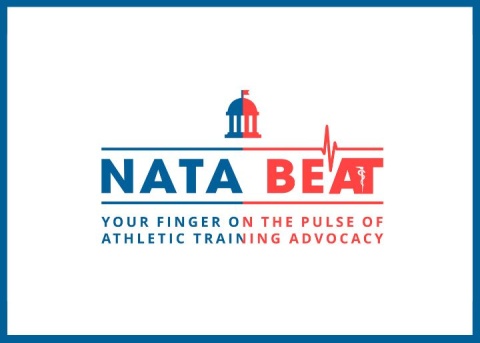
By Scott Sailor
President, National Athletic Trainers' Association
Today's athletes are like finely tuned machines: Every aspect of their physiology is carefully worked over, each variance in the athlete's condition diligently noted. As athletic trainers, we are the tireless architects behind an athlete's health, both on and off the field.
As technology advances, we should think about adjusting the way we care for our athletes. While ATs are used to monitoring things like supplement intake and performance aspects, there are many advantages to taking that cumulative data and using it to guide an athlete’s treatment and rehabilitation plan. The way we approach monitoring is changing – and so are the outcomes for our athletes.
Technology and the future of athletic training
The health care industry is increasingly making a shift toward patient-centered care, and the athletic world is mirroring that by emphasizing athlete-centered training. For ATs, this means that we’re starting to see many health care information technology (HIT) innovations – in particular, big data and analytics – used to benefit athlete health.
In addition to tracking general health and nutrition of athletes, longitudinal electronic health records (EHRs) and programmatic training approaches enable ATs to efficiently document injury. Having this kind of data readily available – especially when the EHR is Web-based and mobile – means that ATs can track their athletes' health trends and address them in near-real time. Where we’re going to see HIT impacting the care of an athlete is in using data analytics to track and analyze an athlete’s health. This will enable ATs to make specific recommendations about the best treatment or rehabilitation path for that athlete.
A data-driven training plan improves athlete performance
Data is essential not just for ATs, but for anyone involved and invested in an athlete’s health. For example, when ATs better understand the way a specific athlete's body reacts and moves, they're able to prescribe a tailored rehabilitation plan following an injury. Athletes end up performing better because their ATs can pinpoint their stress areas and identify a performance improvement strategy. This is a data-driven game plan for your athlete, one that removes subjectivity and lowers the margin of error.
Data helps when it comes to return-to-play decisions, too. Without technology-assisted monitoring, an AT's decision to put an athlete back on the field after an injury is less than scientific. When you pull insights out of a longitudinal record, though, you might find that an athlete who appears to be back to "normal" performance standards actually requires further treatment. Putting that athlete back in play before consulting the data could have led to a second injury. Data doesn't lie, and ATs should pay attention to it.
When it comes down to it, utilizing EHRs for athletes is the obvious next step forward for ATs. EHRs are at a 97 percent adoption rate in the medical space – and as more EHR technology is adapted to fit the athletic industry, ATs should be eager to reap the benefits.





